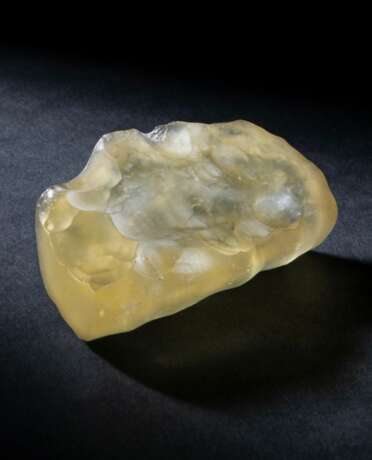ID 543550
Lot 7 | DESERT GLASS FROM THE IMPACT OF AN ASTEROID ON EARTH
Estimate value
£ 1 500 – 2 500
Formed as the result of sand on Earth melting following an enormously energetic asteroid or comet impact circa 29 million years ago. Closely related to tektites, such silicate glass formations had long been considered a mystery with some researchers believing they had originated on the Moon. More recently, scientists agree these materials (whose name comes from the Greek tektos, meaning “melted”) formed as a result of asteroid impacts with Earth. The extraordinary heat that resulted from such collisions liquefied terrestrial particles. Many tektites were blasted into the atmosphere, and quenched into glass before landing. Tektites are named after the locality in which they are found, hence: Australites, Indochinites, Phillipinites, Moldavites, etc. The higher the silica content of terrestrial impact glass, the lighter the color, and so Libyan Desert Glass — derived from sand and containing 98% silica — is sunny yellow; moldavites from the Czech Republic — with 80% silica — cover a range of greens. Libyan Desert Glass was used to make tools during the Late Pleistocene epoch and was used as jewelry in the Pharaonic Period with examples discovered in Tutankhamun's tomb.
3 x 13/4 x 1in. (7.5 x 4.5 x 2.5cm.)
4in. (10cm.) high on stand
80g.
| Address of auction |
CHRISTIE'S 8 King Street, St. James's SW1Y 6QT London United Kingdom | |
|---|---|---|
| Preview |
| |
| Phone | +44 (0)20 7839 9060 | |
| Buyer Premium | see on Website | |
| Conditions of purchase | Conditions of purchase |






